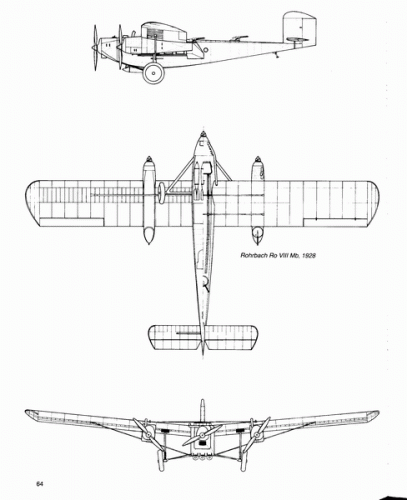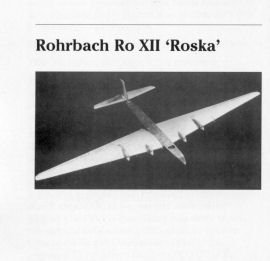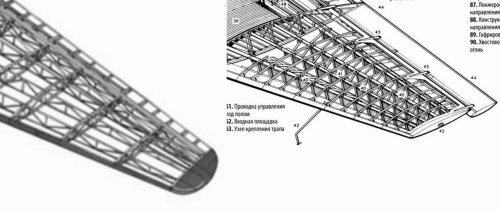Vladimir Kotelnikov in his article about TB-3 mentioned, that aircraft has been so complex and large, that certain people thinks, that Soviet factories would unable to build it in mass production - so its should be transfer this order to "Rohrach" factories. However, the production preparation has started in 1939 at Factory 22,near Moscow.
At this moment I couldn't find the source of this statement (somewhere in magazine, I think), as well my translation is beat rough.
IMHO, Rohrbach company hasn't have the necessary factory power for such mass production - perhaps, Junkers (as already proven manufacturer) has been planned?
Anyway, as one of the enthusiasts of all-metal, stressed skin, cantilever monoplanes Adolf Rohrbach could made great influence on any designers and Air Force officials of that era.
Even E 4/20 looks futuristic, and his owns designs under "Ro" mark looks impressive, excluding the number of series-built ...
It should be noted, that even TB-1 has been born in time, when the ordering of such type in England (Short, probably) has been considered.
Ostekhburo (Special Technical Bureau, headed by Bekauri) ordered heavy aircraft for their purposes - for torpedo-bombing and mine-laying.
So, conventional bombing historically became just the second role of TB-1.
TB-3 design also has been ordered by Ostekhburo.
It could be a situation, that Rorhbach has been secretly ordered to design such heavy aircraft, or - in turn, Soviet intelligence knew something of it's work. This only my speculation.
I think, that after building of ANT-1 and ANT-2 prototypes, establishing of ANT-3 all-metal aircraft and TB-1 as well, Andrey Tupolev have all necessary to design and build such 4-engined monoplane.
One important difference between Rorhbach and Tupolev was structure of their aircraft - stressed-skin against the corrugated one.
Basic dimensions of "Roska" and TB-3 looks very close, as they both planned to use 4x600 hp engines.






